At the risk of sounding like a mad football fan yelling from the stands, or someone who just got 5 numbers in a row, I titled this post: “BERENGO!”. You will see why shortly! Stick with me…..
On the wall in his studio there is a framed letter from Henri Cartier-Bresson. He took it off the nail and handed it to me. He says it is his most prized possession. It praises his work and says that he, Cartier-Bresson, has selected one of his photographs for the inaugural exhibition of 100 photographs at the newly created Fondation Henri Cartier-Bresson in Paris. The exhibition was in 2003.
Following my visit to his studio, I went home and spent a good month tracking down a copy of the catalogue/book from the exhibition. It is called: “Les Choix d’Henri Cartier-Bresson” [The choices/selection of HCB]. Sure enough, the photograph is illustrated on page 95, opposite a photograph by André Kertész.
The photograph is complex. Difficult to read. It contains one of my favourite features, namely frame-in-frame photography, but add to that reflections and your eye keeps moving around the photograph trying to understand what is what. If you are a photographer you can spend a lot of time figuring out how it was done. It is a stunning photograph. Berengo Gardin explained to me that the he was inside the Vaporetto - a sailing bus in Venice - and saw the photograph only when the man in the dark coat got on and leaned against the window. His back created the dark background for the reflection of the man holding the newspaper. He made one photograph. This is it. (Gianni Berengo Gardin: Vaporetto, 1960 - shown at the top of this Post)
Gianni Berengo Gardin: Tuscany, 1958
Gianni Berengo Gardin is a small man with a big heart. He was born October 10, 1930. So, yes, he is 94 years old. He lives in Milan. He is a socialist at heart, and believes in fairness and equality. He charges union rates for a day’s work to this day, as he has done his entire career. The majority of his work has been for the making of books. As I have said in a previous post, the Italians support books like no other country. Cities, regions, corporations, wineries, tire companies, even rice-growers sponsor books. Yes, I did say rice-growers. Just published at the time ‘Il Racconto del Riso’ [The Tale of Rice], Berengo Gardin presented me with a signed copy.
Elena Vaninetti: Gianni Berengo Gardin’s studio I (and II below)
I visited Gianni Berengo Gardin’s apartment and studio with the gallerist who represents his work. She was kind enough to help with translation, when my poor Italian and hand gestures were not enough. Mr. Gardin speaks no English. We slowly walked around his studio, which is located on the top floor, under the eaves of a nondescript building in a row of other nondescript buildings just outside the centre of Milan. As you come up the stairs from the apartment below, you see a very comfortable layout. There are couches, low tables, a desk and lots, and lots of books. In addition to the books, virtually every surface is filled with Gardin’s collection of objects. Not a lot of photographs are hanging, as the walls are sloped, but there are photography books everywhere.
As we were walking around, the gallerist said in a low voice that Berengo Gardin will not let anyone clean. The family has arranged it so that a cleaning lady comes once every couple of weeks when Berengo Gardin is out. She makes sure everything remains in the right place before she leaves. It seems to be a bit of a game…. Gardin pretends he doesn’t know, and the family does the same. I found the two photographs made by Elena Vaninetti of Berengo Gardin’s studio, just to give you an idea….
After I wiped the grin off my face, we started speaking about his favourite photographs. We discussed a range of things, but a lot about Venice, which is my favourite city. Aside from the Vaporetto photograph above, the four photographs below are perhaps my favourites from his time there. He was working in Venice in the early 1960s and it was to become a critical point in his life. It was the time he decided to transition from amateur to professional photographer.
Gianni Berengo Gardin: Regatta, Venice, 1960
Gianni Berengo Gardin: Venice 1961
Gianni Berengo Gardin: Venice, 1959
Gianni Berengo Gardin: Ghetto, Venice, 1960
Over the years, he has made, or provided the photographs for more than 250 books. His work has made it into many museums and there have been many exhibitions, but the vast majority have been in Italy. There seems to be a bit of a wall between Italy, and what one might find in a gallery in New York, or Paris, which are the larger photography markets in the world for collectors. Italy has not quite caught up with these markets. In the last couple of years, Franco Fontana* - whom I have written a Post about previously - seems to have broken through at least a little with shows in Paris and London, but it has been slow for photographers like Berengo Gardin. Only recently, has Peter Fetterman in California started representing Berengo Gardin, but aside from that, there is little in the way of awareness of his work outside Italy.
Berengo Gardin has focused on books most of his career, and it is only in the last 10 years or so that there has been print sales activity. You see older prints of his at auction from time to time. Usually not large prints. But they are exquisite things to hold and enjoy!
Gianni Berengo Gardin: Campo 1970s
Gianni Berengo Gardin: Great Britain, 1977
In the mid-1970s, Berengo Gardin was in the UK. He made a lot of photographs. The one above has become one of his most famous. In 2016, it sold for EUR 5000. The print was made for a book, it measured only 20 x 30 cm. We chatted about the photograph. He smiled, and said quietly: ‘Honestly, I don’t understand, it is not a very good photograph’. He said he didn’t like that it was centred and he thought it was quite boring. He liked the one below better.
GIanni Berengo Gardin: Milano, 1959
In 2013 Berengo Gardin went back to Venice to help the fight against cruise ships, which damage the city and bring virtually no revenue. All the fees from docking and whatever taxes apply to cruise ships go to Rome. None of the money comes back to Venice. The campaign was intense, and I like to think that Berengo Gardin had something to do with the fact that a couple of years ago, the big floating hotel-cities were finally banned permanently. The book is called ‘Venezia e le Grandi Navi’ (Venice and the Big Ships). It is a condemnation in pictures of what mass tourism has done to the World. I think the project aligns very well with his politics, and his love for the city.
Gianni Berengo Gardin: Cruise Ship in Venice 2013
Gianni Berengo Gardin: Paris 1954
Gianni Berengo Gardin: Milano, 1986
Gianni Berengo Gardin - one of the best - and maybe one of the last European humanist photographers of his generation still with us. Sadly, I don’t know the name of his dog. But, they are cute together, no? The photographer Paolo Carlini gave me this portrait. Love it!
Paolo Carlini: Gianni Berengo Gardin and his dog
I was fortunate to spend a few hours with the Great Master. I am very pleased I did. It was a great afternoon. One I shall never forget. Thank you for joining me and Gianni Berengo Gardin today.
In The Guardian newspaper, Gianni Berengo Gardin describes his famous Vaporetto photograph, here: https://www.theguardian.com/artanddesign/2014/apr/03/gianni-berengo-gardin-best-shot-venice-cartier-bresson
* Here is a link to my Post about Franco Fontana:
Until next time….




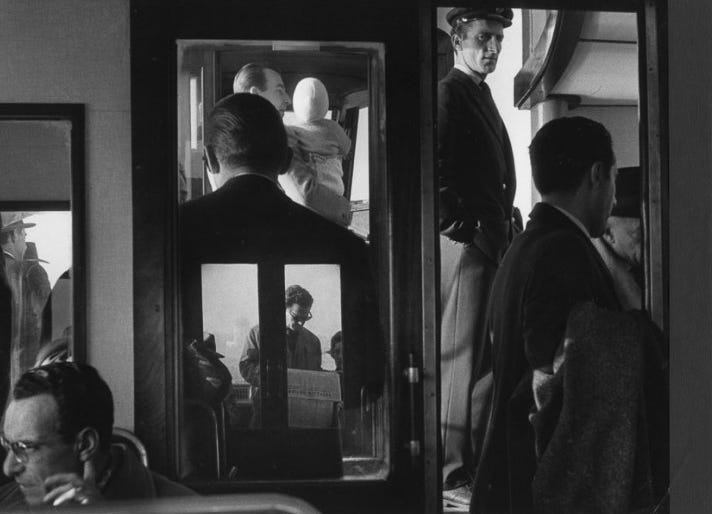




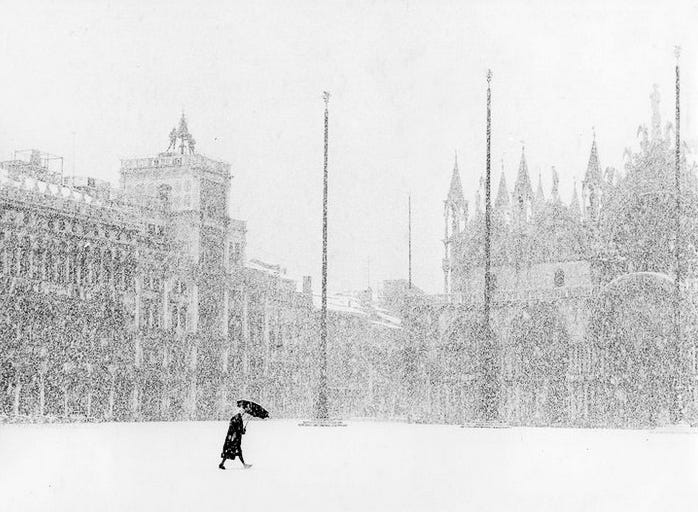
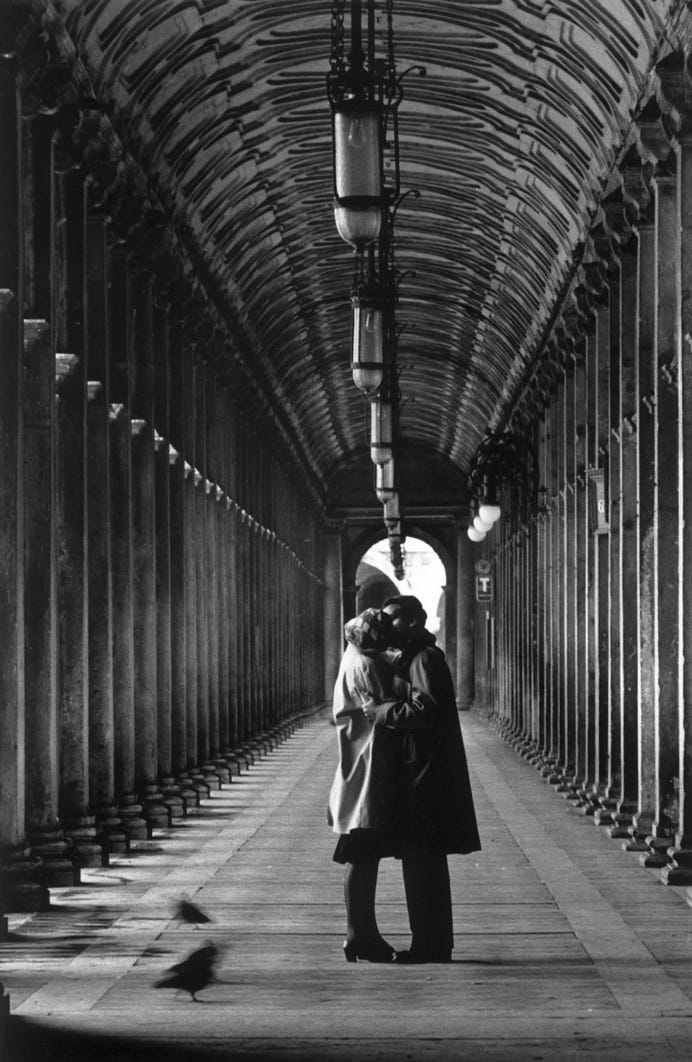
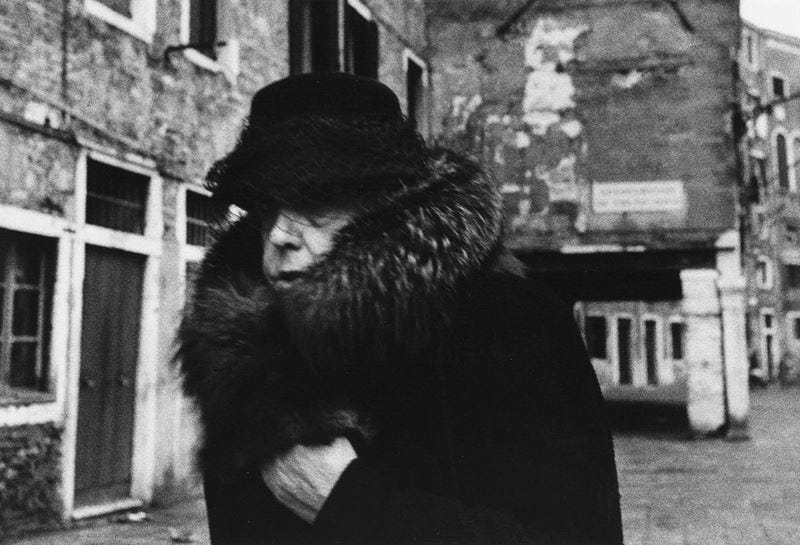


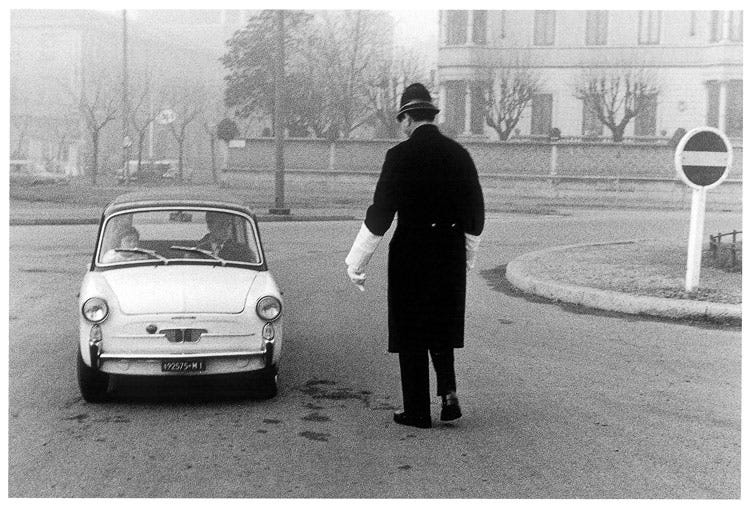


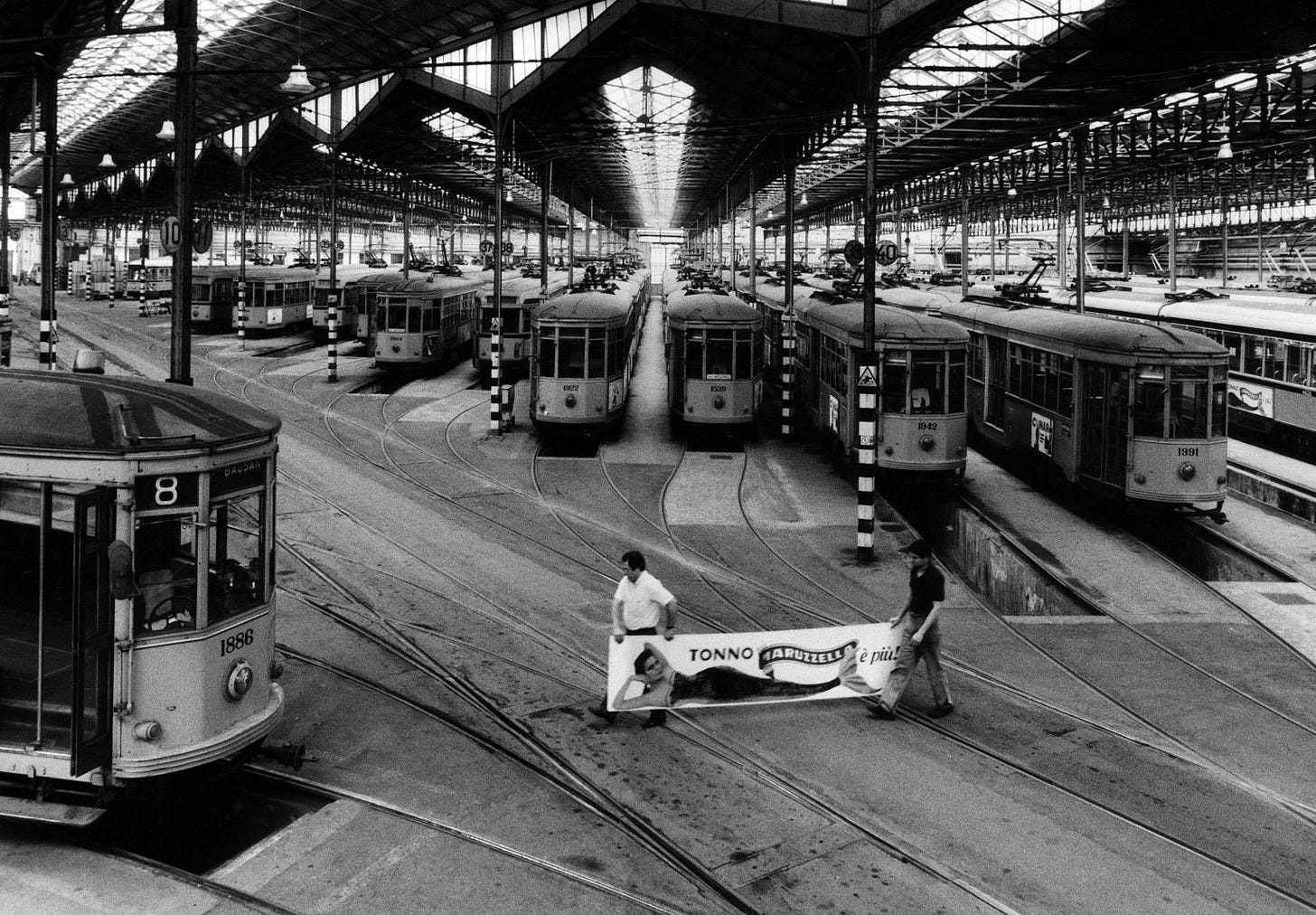


Søren, your stories never cease to amaze me. You are a walking short story collection of the best kind - all about art! I love the way this is written and it makes me want to hop a plane, go sit with Gianni and just talk about his photography. (Fortunately, I speak Italian). I love all the images. They are so wonderful and the closing image with his dog was the best!
I am a great admirer of Franco Fontana. I have been talking about his work to my photography students for years now. But I must admit I didn’t know Berengo. This piece is a great introduction. I will be exploring more of his work for sure.